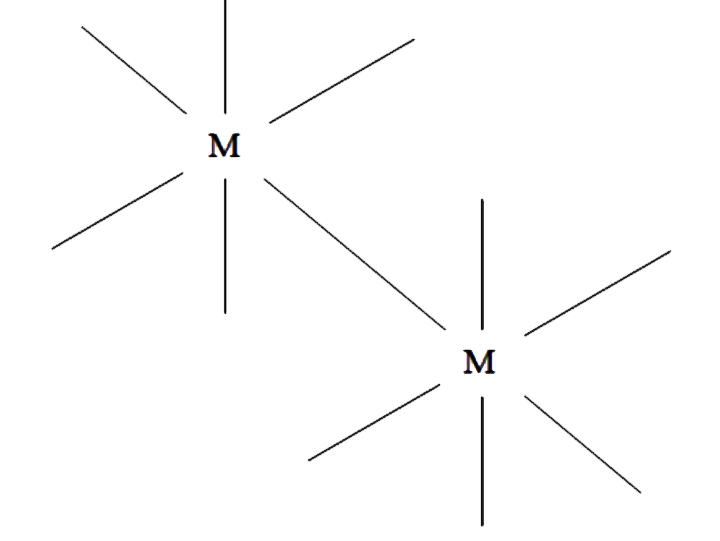Which one of the following metal carbonyls involves the d2sp3 hybridisation for the formation of metal-carbon σ bonds and is paramagnetic ?
[Cr(CO)6]
[V(CO)6]
[Mo(CO)6]
[W(CO)6]
The correct Answer is:B
To solve the question of which metal carbonyl involves d2sp3 hybridization for the formation of metal-carbon sigma bonds and is paramagnetic, we will analyze the given options step by step.
Step 1: Identify the Metal and its Electronic Configuration
We will analyze the electronic configuration of the metals involved in the carbonyl complexes.
1. Chromium (Cr): Atomic number = 24
- Electronic configuration: (Ar) 4s¹ 3d⁵
2. Vanadium (V): Atomic number = 23
- Electronic configuration: (Ar) 4s² 3d³
3. Molybdenum (Mo): Atomic number = 42
- Electronic configuration: (Kr) 5s¹ 4d⁵
4. Tungsten (W): Atomic number = 74
- Electronic configuration: (Xe) 6s² 4f¹⁴ 5d⁴
Step 2: Determine the Effect of CO as a Ligand
CO is a strong field ligand, which means it will cause pairing of electrons in the d-orbitals of the metal.
Step 3: Analyze Each Metal Carbonyl
1. Cr(CO)₆:
- Configuration after pairing: 4s² 3d⁴ (all electrons paired)
- Hybridization: d²sp³
- Magnetic property: Diamagnetic (no unpaired electrons)
2. V(CO)₆:
- Configuration after pairing: 4s² 3d³ (one unpaired electron)
- Hybridization: d²sp³
- Magnetic property: Paramagnetic (one unpaired electron)
3. Mo(CO)₆:
- Configuration after pairing: 5s² 4d⁴ (all electrons paired)
- Hybridization: d²sp³
- Magnetic property: Diamagnetic (no unpaired electrons)
4. W(CO)₆:
- Configuration after pairing: 6s² 5d⁴ (all electrons paired)
- Hybridization: d²sp³
- Magnetic property: Diamagnetic (no unpaired electrons)
Step 4: Conclusion
From the analysis, we find that the only metal carbonyl that exhibits d²sp³ hybridization and is paramagnetic is V(CO)₆.
Final Answer
V(CO)₆ is the metal carbonyl that involves d²sp³ hybridization for the formation of metal-carbon sigma bonds and is paramagnetic.
---
We will analyze the electronic configuration of the metals involved in the carbonyl complexes.
- Electronic configuration: (Ar) 4s¹ 3d⁵
- Electronic configuration: (Ar) 4s² 3d³
- Electronic configuration: (Kr) 5s¹ 4d⁵
- Electronic configuration: (Xe) 6s² 4f¹⁴ 5d⁴
CO is a strong field ligand, which means it will cause pairing of electrons in the d-orbitals of the metal.
1. Cr(CO)₆:
- Configuration after pairing: 4s² 3d⁴ (all electrons paired)
- Hybridization: d²sp³
- Magnetic property: Diamagnetic (no unpaired electrons)
- Configuration after pairing: 4s² 3d³ (one unpaired electron)
- Hybridization: d²sp³
- Magnetic property: Paramagnetic (one unpaired electron)
- Configuration after pairing: 5s² 4d⁴ (all electrons paired)
- Hybridization: d²sp³
- Magnetic property: Diamagnetic (no unpaired electrons)
- Configuration after pairing: 6s² 5d⁴ (all electrons paired)
- Hybridization: d²sp³
- Magnetic property: Diamagnetic (no unpaired electrons)
From the analysis, we find that the only metal carbonyl that exhibits d²sp³ hybridization and is paramagnetic is V(CO)₆.
V(CO)₆ is the metal carbonyl that involves d²sp³ hybridization for the formation of metal-carbon sigma bonds and is paramagnetic.
Topper's Solved these Questions
Similar Questions
Which of the following is not a metal carbonyl?
View SolutionWhich of the following metal carbonyl has structure in the diagram?
 View Solution
View SolutionThe d-orbitals involved in sp3d hybridisation is:
View SolutionIn Which of the following metal to metal bond is present?
View SolutionWhich one of the following has strongest metallic bonding ?
View SolutionIn which of the following metal to metal bond is present ?
View SolutionWhich of the following does not have a metal carbon bond?
View SolutionAmong the following , metal carbonyls, the C-O bond is strongest :
View SolutionIn which of the following species the central atom is sp3d2 hybridised?
View SolutionAmong the following, metal carbonyls, the C-O bond is strongest in :
View Solution

